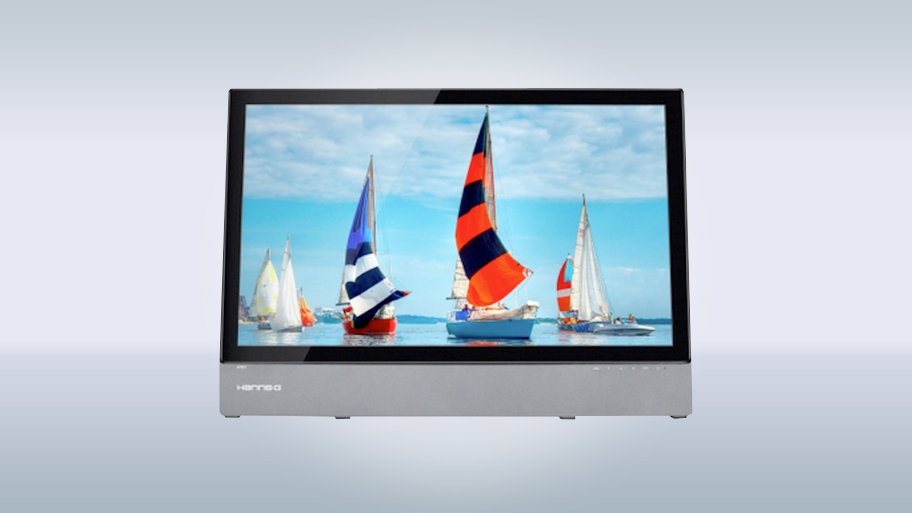TechRadar Verdict
A good but not great monitor that will appeal to those seeking a sturdy, hassle-free touchscreen panel and aren't too concerned about the slightly stretched resolution.
Pros
- +
Multitouch works well
- +
Flexible stand
- +
Decent response time
Cons
- -
1080p suffers at 27 inches
- -
Big and heavy
- -
Average contrast ratio
Why you can trust TechRadar
Hanns.G, a division of Taiwan-based HannStar, has outed the HT271HPB, its second touchscreen monitor in six months following the release of the 21.5-inch HT231 that landed back in November.
The company is pitching the new Windows 8-compatible model as suitable for use at home or in the office. The 27-inch panel has a bold presence thanks to a protruding, 2.5-inch long and 1-inch thick chin that doubles up as support.
It's being sold with an RRP of £269 (around $448/AU$484), placing it in the same price bracket as the Ilyama ProLife GB2773HS. It doesn't come with fancy features - such as MHL or a 144Hz refresh rate - but it does offer 10-point multitouch without breaking the bank.
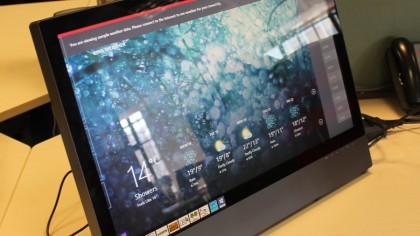
Design and features
Make no bones about it: this monitor is a big slab. In addition to the black bezel surrounding the screen, the panel is supported by a grey chin that houses its touch-sensitive menu controls on the right-hand side.
Its two-tone grey and black colour scheme has a workman-like matte quality that's practical, rather than sexy. It's heavy, too, weighing in at 8.9kg. Picking up the monitor is comparable to hoisting Apple's previous-generation iMacs before they went on a diet. The 27-inch iMac model from July 2010, for example, weighed in at a similarly lofty 9.2kg.
Out of the box, the monitor comes with a Quick Start Guide, optional Warranty Card, a power chord, power adaptor, VGA cable, audio cable that can be used for hooking the monitor up to a speaker unit, and a USB cable that allows touch connectivity.
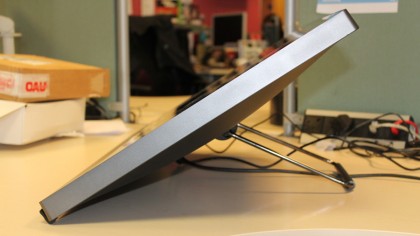
The monitor has a rear stand made of solid steel that allows you to tilt it between 10 and 60 degrees. Though it means you can adjust it to a more comfortable position when using it more akin to how you would a tablet, it means it's impossible to use it in a vertical position.
The stand retracts quite a bit and is solidly constructed. You'll need a fairly big desk to interact with the monitor when fully reclined, but you won't have to worry about it falling over or collapsing if accidentally knocked due to the stand's rigidity.
Resolution and picture quality
The Hanns.G HT271 has a resolution of 1920 x 1080 pixels, lending it a 16:9 aspect ratio.
While standard on 22- to 24-inch monitors, full-HD is a resolution that tends to suffer on 27-inch monitors, including the HT271HPB. Text on websites is rendered blurry and images lacking clarity. As such, it's not a monitor you'll want on your desk if reading web content is going to be your primary activity.
Resolution issues aside, the monitor features decent brightness levels out of the box (of 300cd/m2) with a display of 16.7 million colours. Contrast is fairly average, coming in at 1000:1.
The refresh rate is 5ms which is around average for a 1080p monitor and doesn't result in any ghosting when playing fast-paced FPS or racing games, as is expected from a gaming brand like Hanns.G.
The panel itself is an LCD panel of the IPS variety that provides very good viewing angles (of 170 degrees, according to Hanns.G).
It features four different modes (PC/Movie/Game and ECO) that adjust the monitor's colour palette to suit your activities.
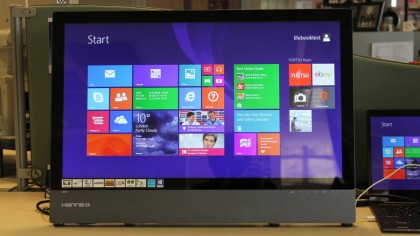
Setup and touch controls
The Hanns.G HT271HPB is Windows 8 certified and as a result can be setup on that operating system in a snap.
After inserting the supplied DVD (which you'll need to do as HannsG hasn't put the drivers up for download on its website) and installing the driver, you need to connect your chosen input cable, along with the supplied micro-USB cable for activating its touchscreen abilities, and you're good to go.
The monitor has a touch-driven menu on the front right-hand side that allows you to tweak numerous settings such as contrast, brightness, sharpness and others, along with an auto-setup option.
Touch-sensitive menus have a tendency to drive you crazy due to fiddly mis-presses, but the HT271HPB's are responsive and let you navigate the options with relative ease. That said, they're not yet preferable to tactile alternatives.
The Hanns.G GT271HPB's 10-point multitouch functionality works well, proving accurate and responsive, with lag-free pinching and zooming in websites. Using touch to navigate Windows 8's live tiles and activating charms is similarly easy straightforward. It's here that the monitor's sub-par default 1080p resolution actually works in its favour as it's easier to make accurate selections using your fingers.
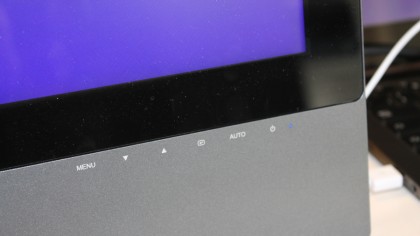
Ports and connectivity
The monitor has the usual array of ports around the back, including HDMI, VGA, DVI (HDCP), line-in, headphone and a DC power connector. They're positioned on the right-hand side around the back and are easily accessible with the monitor stood up, so you don't have to lay it down to get decent access to them. There's also a port for a Kensington Security Lock.
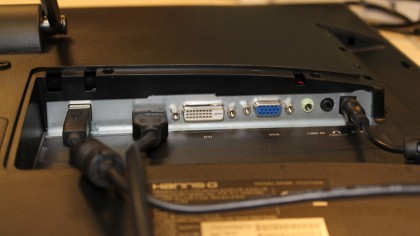
Final verdict
The Hanns.G HT271HPB has been built for Windows 8 users looking for a sturdy, 27-inch monitor to heavily interact with using touch input. If that's you, and you're looking for a sub-£250 panel, you could do worse than the Hanns.G HT271HPB.
That said, opting for 1080p, rather than the more suitable 2560 x 1440 pixel resolution, causes image quality to suffer when undertaking certain activities such as web browsing, and going the step up in resolution would be worth it for those who don't see touch as a necessity.
